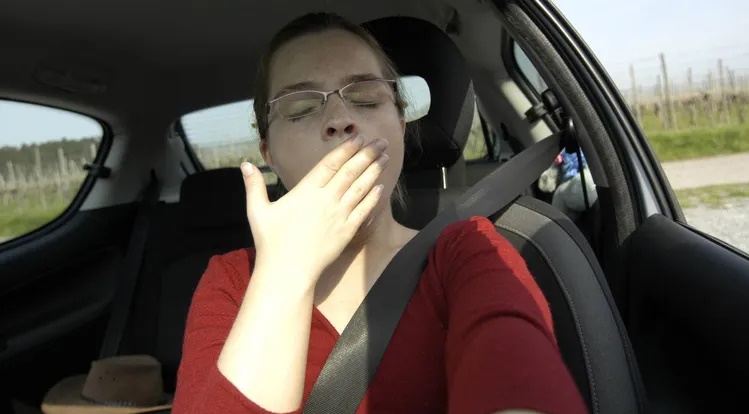What you can do against microsleep
Suddenly your eyes close while driving: microsleep is a deadly danger in traffic - and more widespread than you think.

It is estimated that one in four fatal car accidents is caused by microsleep. How to prevent it and why your passenger plays a crucial role.
Microsleep is massively underestimated: According to the German Society for Sleep Research and Sleep Medicine (DGSM), suddenly nodding away from the wheel has more deadly consequences than alcohol. Scientific studies suggested that the death toll as a result of microsleep is more than double.
How many drivers have fallen asleep at the wheel?
As the DGSM reports, one in four drivers has nodded off behind the wheel. Driving in the early hours of the morning is particularly dangerous after a short night’s sleep: the reaction time after many hours without sleep is reported to be similar to that after consuming alcohol. As little as 17 hours without sleep impairs the ability to react, as does 0.5 per mil alcohol in the blood, 22 hours without sleep have the same effect as 1.0 per mil alcohol in the blood – and over-tiredness also increases the risk of falling asleep.
What makes microsleep so dangerous?
A simple arithmetic example shows how risky spontaneous falling asleep is: If you close your eyes for just three seconds at a speed of 100 km/h, you will be flying blind for 80 meters. Curves, pedestrians or other road users cannot be seen over long distances.
Microsleep – these are the signs
Are your eyelids getting heavier and heavier, do you often yawn or do you suddenly wince? You overlook traffic signs, wander mentally and with your eyes and can’t keep up the pace? If you notice such clear signs of tiredness at the steering wheel or tiredness spreads among your fellow passengers, then the dangerous microsleep is not far off.
What role do sleeping passengers play?
Sleep researchers assume that the even breathing of a sleeper and his or her immobility in certain situations have a very calming and relaxing effect on people in the immediate vicinity. In the car, this effect can be so strong that the driver is literally infected. Monotonous stages on the motorway and driving at night promote this effect.
This is how technology can help
Modern cars have long had a number of assistants on board, such as drowsiness detection. It uses acoustic and visual signals to alert the driver to take a break. For example, the system recognizes from the steering behavior whether the driver’s concentration is dropping. And a lane departure warning system warns you if you are crossing the lane by vibrating on the steering wheel, the seat or by acoustic signals. Some systems also automatically guide the vehicle back into lane. Then at the latest it is really high time for a sufficiently long break.
This is how you can prevent it
Especially before longer journeys, for example when going on vacation, go to bed early the night before so that you can start rested.
Take a break for about 20 minutes about every two hours.
Proper nutrition: It is better to eat several light meals than one heavy one.
If the journey takes more than eight hours in total, consider an overnight stay so that you can continue your journey rested and relaxed the next day.
Shortly before microsleep – what now?
The most important rule: pull over as quickly as possible, preferably to a rest area (on the motorway) or another quiet parking space.
A bit of movement at a rest area then gets the circulation going. Alternatively, a short sleep of around 10 to 20 minutes also contributes to regeneration.
Incidentally, such a break with a power nap on the road cannot be delayed with caffeinated drinks or fresh air from an open window, warns the German Road Safety Council (DVR). Fatigue cannot be tricked.



